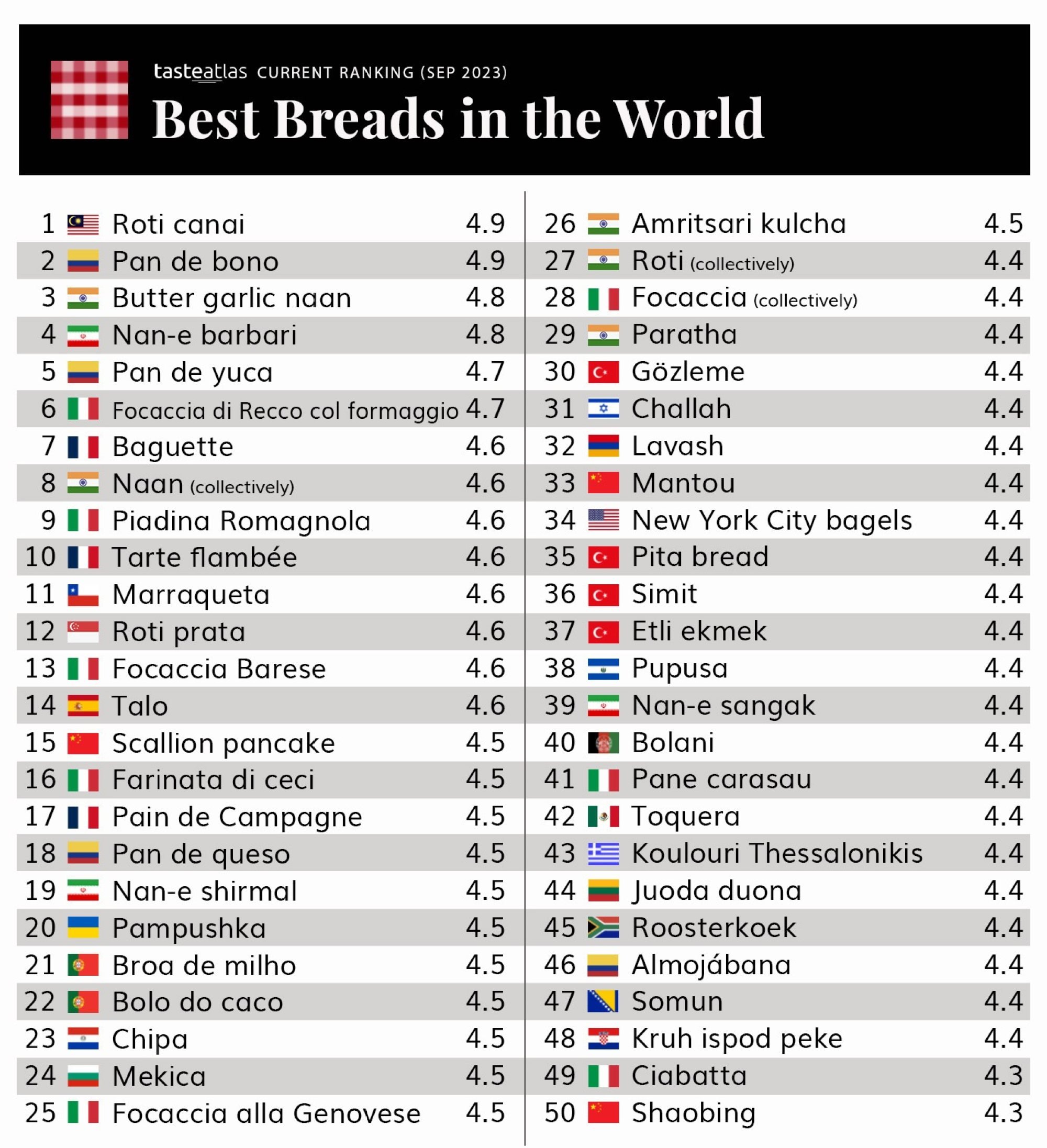
Malaysia’s roti canai named world’s best bread
- Touted as Malaysia’s top breakfast choice, roti canai ranked first among the ‘Top 50 Best Breads’ by international food guide TasteAtlas
- Malaysia’s flag is presented next to the listing although the guide notes roti canai is also available in Brunei, Indonesia, Thailand and Singapore
Touted as Malaysia’s top breakfast choice, it ranked first among the “Top 50 Best Breads” from around the world on the website’s listing.
Roti canai was awarded a grand total of 4.9 stars, putting it on par with the No 2 bread, Colombia’s pan de bono.

“Roti canai, a pan-fried flatbread that is popular in Malaysia, is made with flour, water and eggs,” the website says.
“The dough is folded several times to create layers, resulting in a soft, fluffy texture on the inside and a crispy outer layer.”
Why people in Southeast Asia can’t get enough of roti canai
This isn’t the first time that roti canai and other Malaysian treats have been included in TasteAtlas’ lists of the best foods in the world.
Earlier in February, TasteAtlas ranked roti canai as the second-best street food in the world.
In September last year, it ranked the bread as first among 50 others in its list of World’s 50 Best Street Foods.

